
Roots
To gaze upon a strand of textured hair is to hold a living testament, a delicate helix spun from epochs of resilience and inherited wisdom. It carries the whisper of ancestral lands, the stories of sun-kissed plains, and the deep, abiding knowledge passed through generations. For those who bear this crown, understanding what traditional African ingredients support strong, resilient textured hair growth transcends mere product application; it becomes an act of honoring lineage, a homecoming to practices shaped by the very pulse of the continent. Our hair, in its myriad coils and kinks, stands as a profound connection to a heritage that speaks of ingenuity, adaptation, and an enduring beauty born from deep respect for the earth’s gifts.
The very structure of textured hair, with its unique elliptical cross-section and often numerous twists along the shaft, renders it distinct from straighter types. This architecture, a biological marvel, can make it prone to dryness and breakage if not nurtured with understanding. Throughout time, African communities developed sophisticated systems of care, born from intimate observation of nature’s bounty and a profound recognition of hair’s spiritual and social importance. These ancient practices offer a profound lens through which to view hair’s fundamental needs, connecting us to a heritage where botanicals were not simply remedies but partners in well-being.

Hair Anatomy And Its Ancestral Interpretation
The study of textured hair’s unique anatomy reveals a complexity that traditional African approaches intuitively addressed. Unlike the rounder cross-section of straight hair, the elliptical shape of coiled strands means the cuticle layers often do not lie as flat, leaving the hair more susceptible to moisture loss. Moreover, the points of coiling along the hair shaft represent areas of structural vulnerability. Ancient African hair care, long before microscopes revealed cellular intricacies, seemed to grasp these realities.
Their practices focused on sealing moisture, strengthening the hair shaft, and protecting delicate strands from environmental stressors. This practical wisdom, distilled over countless centuries, speaks to a deep, experiential understanding of how hair thrives.
Consider the role of the scalp. In traditional African wellness, a healthy scalp was the bedrock of healthy hair. It was viewed as an extension of the body’s overall vitality, a fertile ground from which strength could arise.
Cleansing rituals often involved gentle, clarifying agents that respected the scalp’s natural balance, followed by applications of nutrient-rich substances to soothe and fortify the skin beneath the strands. The interplay between internal health and external radiance, a tenet of ancestral healing, found clear expression in hair practices.

Hair’s Rich Classification And Cultural Narratives
While modern classification systems attempt to categorize textured hair numerically or by letter, the heritage perspective holds a far richer, less rigid understanding. In traditional African societies, hair was a language. Its styles, adornments, and textures could signal age, marital status, tribal affiliation, wealth, or even spiritual connection.
There was no singular ideal; instead, a vast spectrum of hair types was celebrated, each unique pattern understood within its community’s context. This stands in stark contrast to later, imposed beauty standards that often sought to diminish the inherent beauty of coiled hair.
For instance, the Himba women of Namibia use intricate braiding and a paste of red ochre, called Otjize, not only as a cultural symbol but also as a practical shield for their hair against sun and insects. This paste, containing butterfat and ochre, symbolizes a direct link to the land and ancestors. This example illustrates a hair classification system rooted in identity and protection, not simply curl pattern. This cultural lexicon of hair is something Roothea reveres, recognizing that our modern attempts to categorize must always be mindful of the rich human tapestry that precedes them.
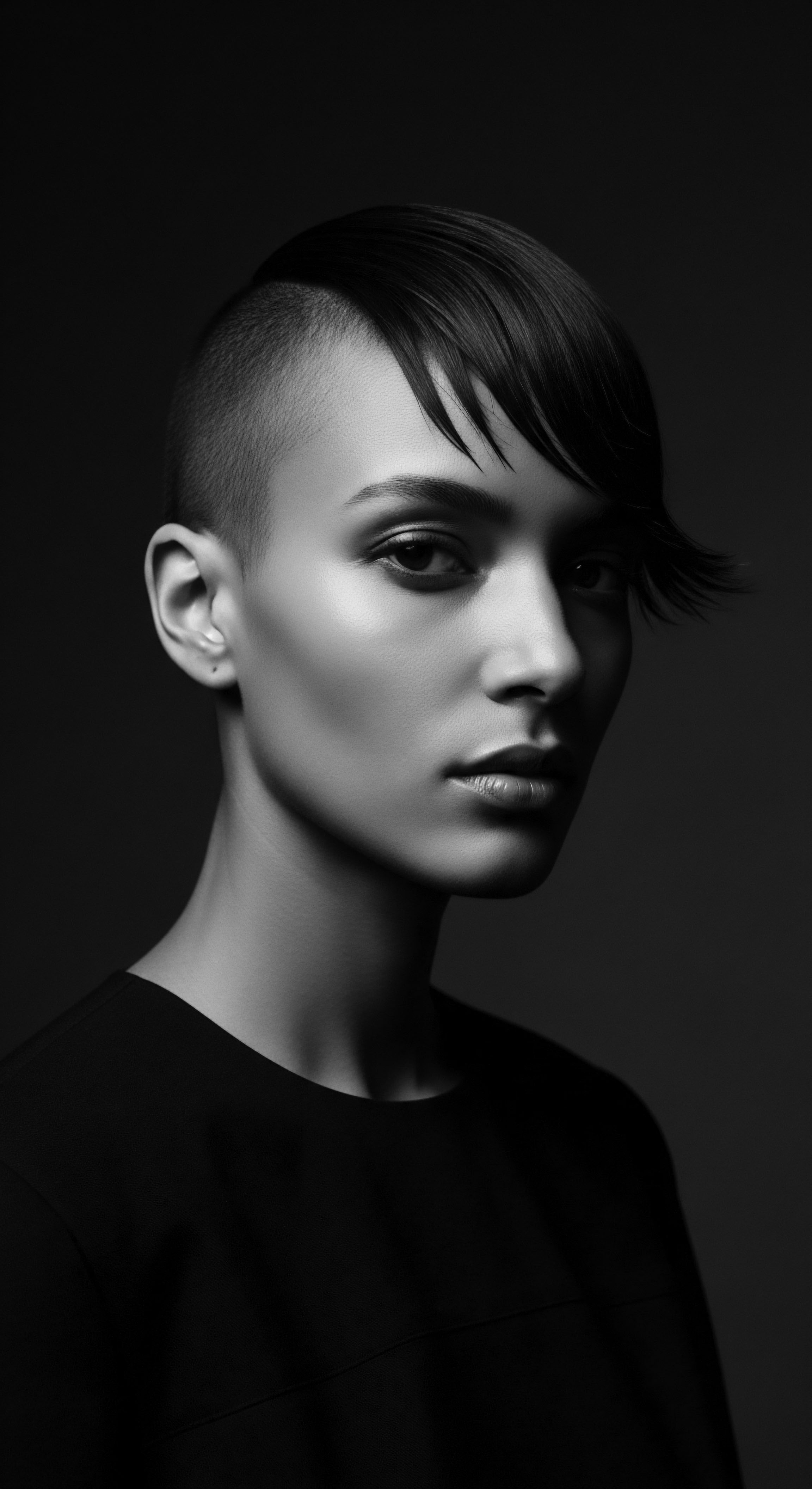
Words Of The Hair Lands
The lexicon surrounding textured hair has evolved, but at its heart remain traditional terms that speak to enduring practices and perceptions. To speak of hair in African contexts means acknowledging terms that are often rooted in local languages, describing specific types, styles, or care rituals.
- Karité ❉ The Wolof word for shea, referring to the shea tree, the nuts of which yield the widely celebrated shea butter.
- Chebe ❉ A powder derived from the Croton zambesicus plant, used by Basara women of Chad for centuries to maintain hair length and strength.
- Oti-Ise ❉ A Yoruba term meaning “hair cream” or “hair oil,” reflecting the common historical use of rich topical applications.
- Methi ❉ A common name for fenugreek in various cultures, including those influenced by East African and South Asian traditions, highlighting its broad use.
These terms, and countless others across Africa’s diverse linguistic landscape, carry stories within their very sounds, connecting contemporary care to ancient roots.

Hair Growth Cycles And Earth’s Rhythm
Hair growth follows a cycle ❉ anagen (growth), catagen (transition), and telogen (resting/shedding). Environmental factors, nutrition, and overall well-being profoundly influence these cycles. Historically, African communities understood this connection implicitly.
Their dietary practices, rich in local produce and nutrient-dense foods, inherently supported hair health from within. Seasonal changes often dictated harvesting of botanicals, aligning hair care with the rhythms of nature.
The traditional approaches recognized that hair thrives when the body thrives. They cultivated practices that addressed holistic wellness, seeing hair as a reflection of internal balance. This perspective offers a powerful counterpoint to modern quick-fix solutions, reminding us that truly resilient hair grows from a foundation of holistic care deeply tied to the natural world.
Understanding textured hair’s heritage means acknowledging its unique structure, celebrating its cultural classifications, respecting its ancient lexicon, and aligning care with natural rhythms.
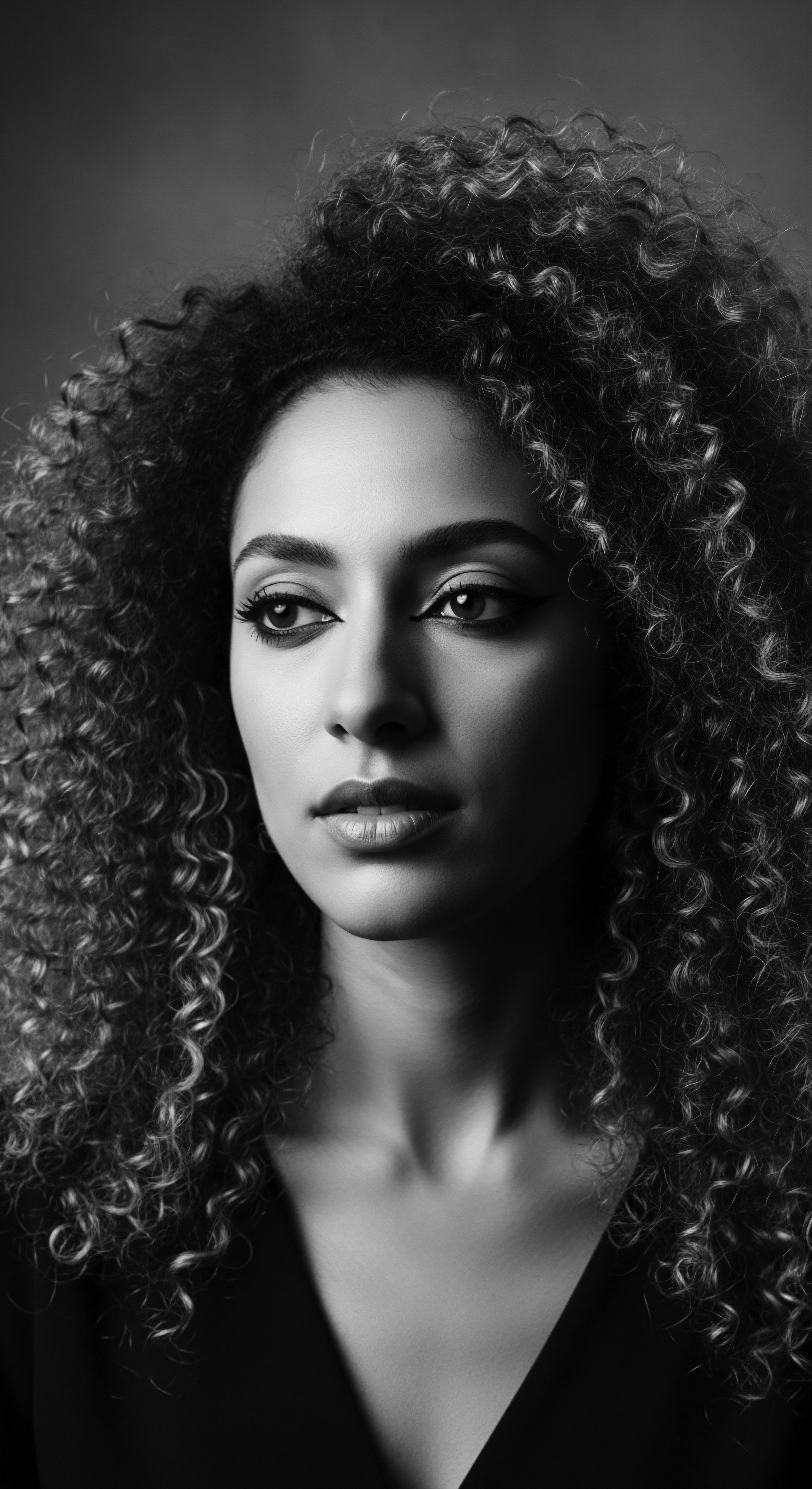
Ritual
From the hands that gather wild botanicals to the communal gatherings where hair became a canvas for expression, the application of traditional African ingredients was seldom a solitary task. It was, instead, a ritual, an experience imbued with meaning, connection, and purposeful movement. These practices, honed over centuries, represent a living legacy of how textured hair was cared for, adorned, and celebrated. The rhythm of these rituals, the very way ingredients were prepared and applied, speaks volumes about the collective ingenuity and devotion to hair’s well-being and its role in identity.
The transformation of raw ingredients into potent elixirs and treatments formed the heart of these traditions. Women, often together, would pound shea nuts, grind powders, and steep herbs, their hands carrying the knowledge of generations. This collective activity strengthened community bonds, a shared understanding of hair’s physical and spiritual significance. The techniques employed were not random; they were precise, often mirroring the inherent needs of coiled and kinky textures, aiming to protect, moisturize, and strengthen with gentle authority.

Protective Styling From Ancestral Roots
The encyclopedic range of protective styles for textured hair finds its deepest roots in African heritage. Braids, twists, cornrows, and various forms of threading were not merely aesthetic choices; they served vital practical purposes, safeguarding delicate strands from the sun, dust, and daily wear. These styles minimized manipulation, allowing hair to retain length and moisture. The ingredients applied before, during, and after styling were crucial for enhancing these protective benefits.
Consider the practice of African threading , widespread in West and Central Africa. This technique involves wrapping sections of hair tightly with thread, stretching the hair without heat. This practice created elongated, stretched hair that could then be styled in various ways, all while protecting the ends.
Before threading, hair would often be coated with rich butters or oils, providing a barrier against friction and aiding moisture retention. This shows an early understanding of how to maintain hair length by preventing breakage, a continuous challenge for highly textured hair.
| Styling Practice Braiding (Cornrows, Box Braids) |
| Traditional Ingredients Used Shea butter, various herbal oils (e.g. Baobab oil, Marula oil), Chebe powder paste |
| Heritage Benefit for Textured Hair Minimized tangling, protected ends, facilitated ingredient absorption, signaled social status and identity. |
| Styling Practice African Threading |
| Traditional Ingredients Used Plant-based oils, water-based solutions with herbs |
| Heritage Benefit for Textured Hair Elongated hair without heat, prevented shrinkage, reduced breakage, prepared hair for intricate designs. |
| Styling Practice Loc Maintenance |
| Traditional Ingredients Used African Black Soap for cleansing, herbal rinses, natural oils (e.g. Castor oil) for moisture and sheen |
| Heritage Benefit for Textured Hair Symbolized spiritual connection and identity, preserved hair length, required minimal daily manipulation. |
| Styling Practice These practices, deeply rooted in African traditions, served both practical functions of hair care and profound cultural expressions of identity and community. |

Natural Styling And Defining Heritage
Beyond protective styles, traditional African communities possessed sophisticated methods for defining natural hair’s patterns and enhancing its innate beauty. These techniques often involved the deliberate layering of ingredients to create specific textures and hold.
The use of clays , such as Rhassoul Clay from Morocco, served as gentle cleansers that did not strip the hair of its natural oils, allowing the natural curl pattern to remain intact and defined. After cleansing, leave-in treatments made from plant mucilages, like those found in soaked fenugreek seeds , provided slip for detangling and offered a soft, flexible hold, accentuating coil definition. This approach prioritizes the hair’s natural state, working with its texture rather than against it, a testament to a heritage that celebrates authenticity.

Historical Wigs And Hair Adornments
The history of wigs and hair extensions in Africa is as old as civilization itself, extending far beyond contemporary trends. In ancient Egypt, elaborate wigs made from human hair, plant fibers, or wool were common, often treated with beeswax , Castor Oil, and aromatic resins for styling and preservation. These were not simply fashion statements; they indicated status, spiritual beliefs, or served protective functions against the elements.
Across various African cultures, hair adornments – beads, cowrie shells, precious metals – were meticulously woven into natural hair or extensions. The Fulani people of West Africa , for instance, are renowned for their intricate hairstyles adorned with beads and cowrie shells, signifying everything from fertility to social standing. These embellishments, often applied with a base of moisturizing ingredients, were extensions of the hair ritual, weaving cultural narratives directly into one’s appearance.
Traditional African hair care rituals transform raw botanicals into fortifying elixirs, embodying a collective devotion to hair as a canvas for identity and a symbol of resilience.

Heat Styling And Ancient Methods
While modern heat styling often involves high temperatures and can compromise textured hair if not managed carefully, historical African methods for altering hair texture typically avoided direct, intense heat. Instead, techniques like African threading provided temporary stretching and elongation through tension, maintaining the hair’s integrity. The closest historical analogues to thermal reconditioning were perhaps the application of warm oils or butters, which could enhance absorption and temporarily soften the hair for easier manipulation. This softer approach respected the inherent fragility of the hair’s coiled structure, a legacy of practices designed for preservation and health over drastic alteration.

A Toolkit Of Ancestral Wisdom
The tools used in traditional African hair care were simple, yet perfectly suited to the needs of textured hair. They included wide-toothed combs crafted from wood or bone for gentle detangling, often fashioned by hand within communities. Gourds or clay pots served as vessels for mixing herbal infusions and butters. The most important tools, arguably, were the hands themselves, skilled in braiding, twisting, and applying treatments with practiced care.
The mortar and pestle for grinding herbs, the calabash for holding mixtures, and even certain types of hand-woven cloths for wrapping hair during treatments – each object had its place in the ritual. These tools were extensions of the body, facilitating a connection with the natural ingredients and the heritage of care. Their simplicity speaks to a profound efficiency and a deep reliance on natural processes, prioritizing gentle handling and methodical application.
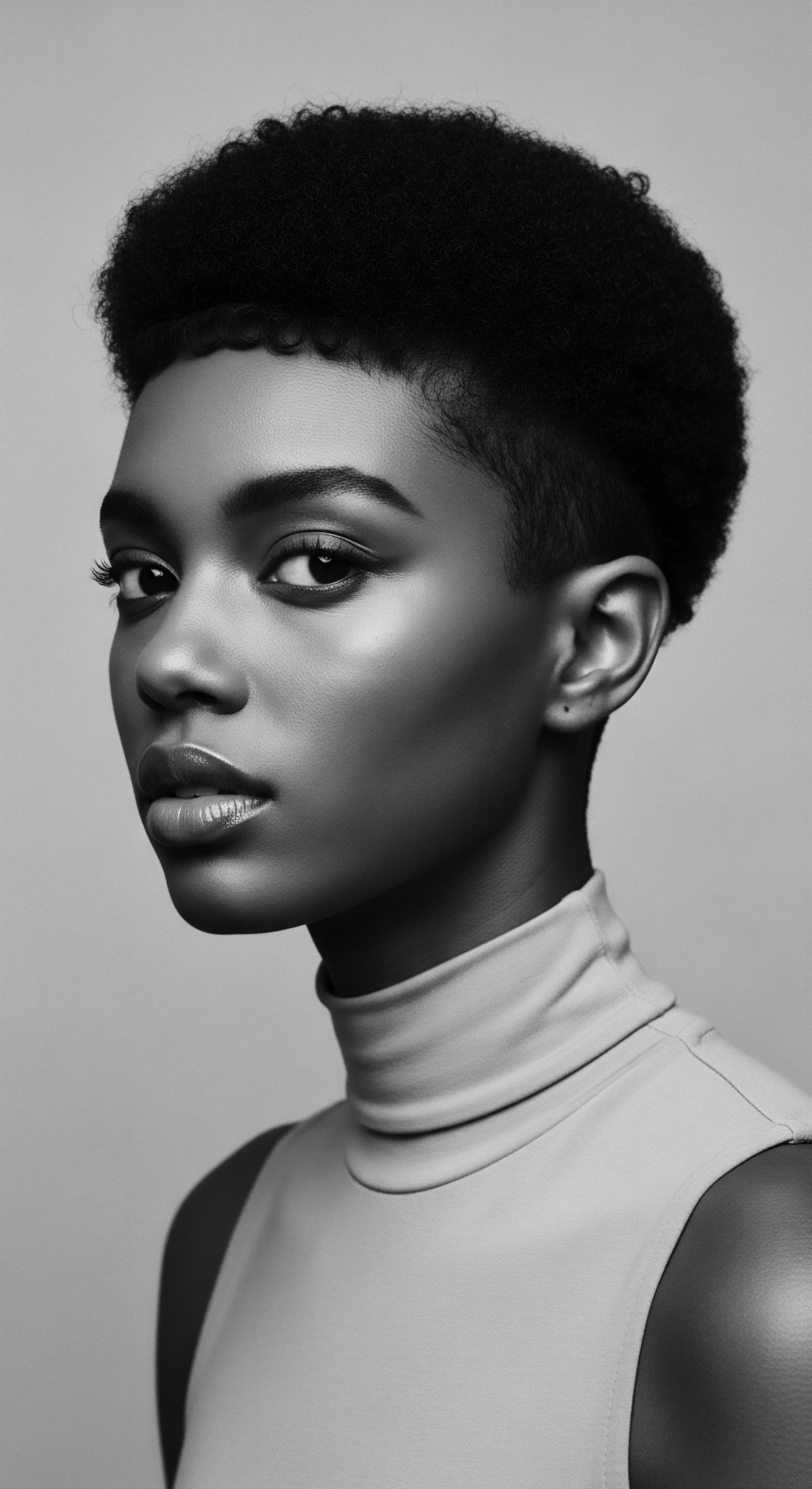
Relay
To truly appreciate the enduring wisdom of traditional African ingredients, one must consider their journey through time, a relay of knowledge passed from elder to youth, from continent to diaspora. This advanced exploration moves beyond surface understanding, inviting a deeper look into the interplay of ancestral practice and contemporary scientific insight. It reveals how ingredients, once rooted in specific ecologies, became universal symbols of resilient beauty for textured hair, defying geographical boundaries and speaking to a universal need for holistic, heritage-informed care.
The challenge often lies in bridging the historical record with modern validation. Yet, it is in this intersection that the profound authority of traditional African ingredients shines most brightly. Modern research frequently echoes the observational truths known for centuries, offering explanations for benefits long experienced. This interplay solidifies the notion that these practices are not merely anecdotal; they are backed by a deep, generational understanding of botanical properties and their interaction with textured hair.
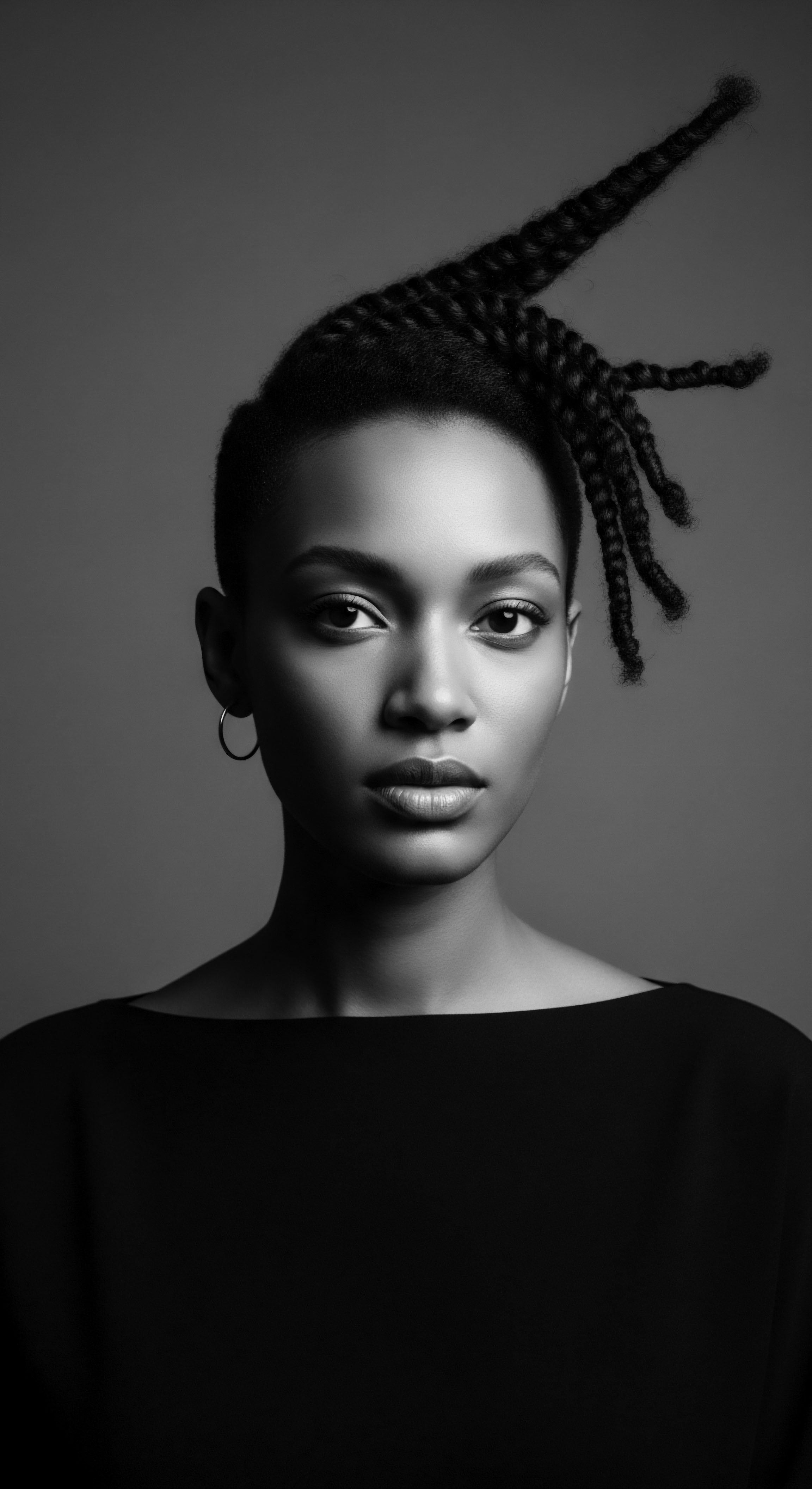
Can Ancestral Wisdom Inform Modern Hair Regimens?
Creating personalized textured hair regimens today finds powerful inspiration in ancestral wisdom. The traditional approach was rarely one-size-fits-all; instead, it adapted to individual needs, local resources, and specific hair types within a community. This adaptive sensibility is what modern bespoke hair care strives for. Rather than rigid protocols, there was a fluid understanding of hair’s condition, responding with appropriate natural treatments.
Consider the principle of layering ❉ oils, butters, and aqueous herbal infusions were often applied in sequence to seal in moisture, a practice that mirrors contemporary understanding of the LOC (Liquid, Oil, Cream) Method or similar layering techniques. This ancestral layering ensured maximum hydration and protection for hair prone to dryness. The consistent, gentle application over time, rather than infrequent, intense treatments, was a cornerstone of these regimens, reflecting a patient, nurturing approach.
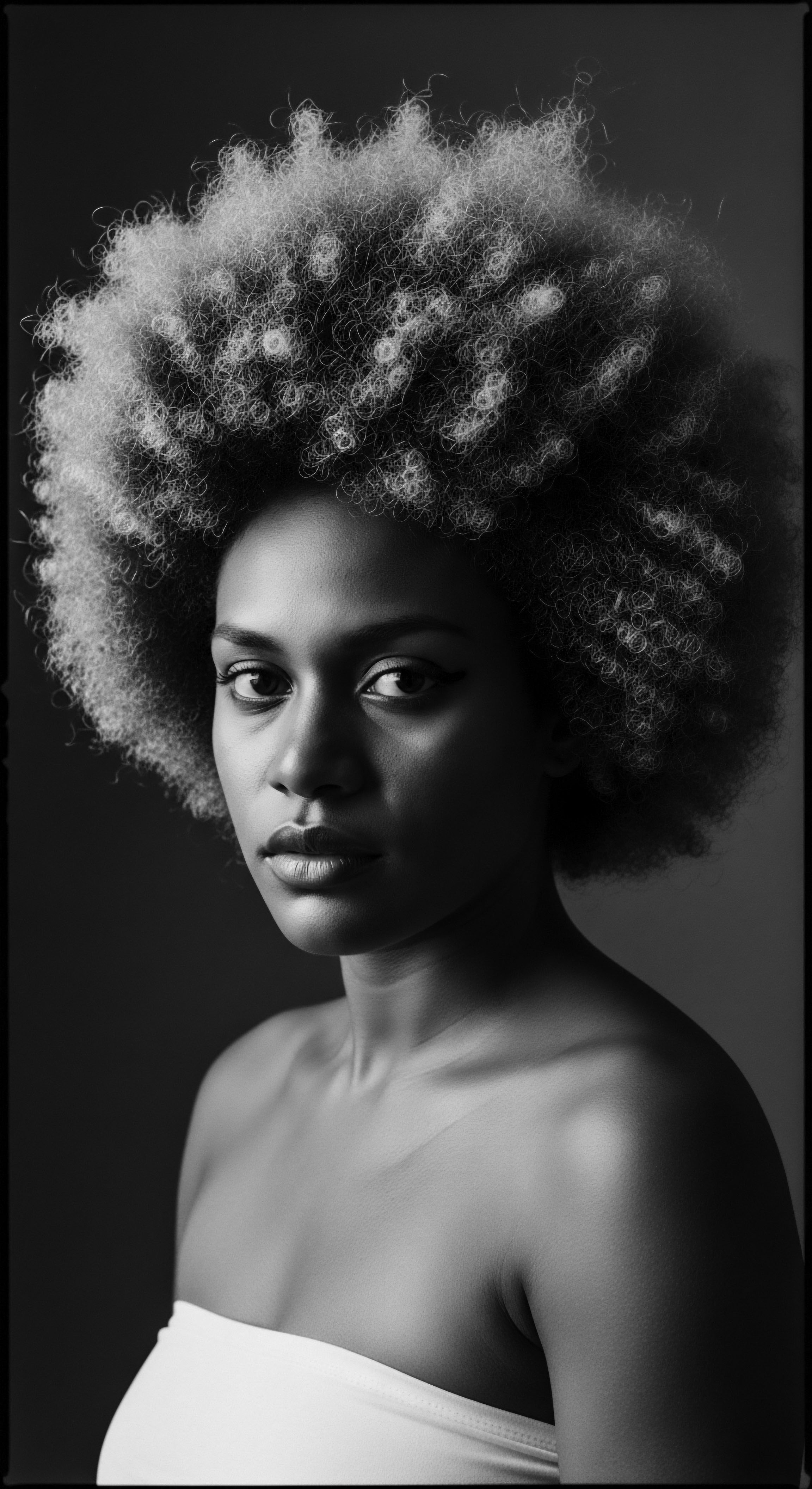
The Nighttime Sanctuary Historical Basis
The importance of nighttime protection for textured hair, often through the use of satin or silk bonnets and scarves, is not a recent discovery. Its historical basis can be traced back to African traditions where head coverings were used not only for cultural or religious reasons but also for practical hair care. These coverings protected intricate styles, preserved moisture, and minimized friction against rough sleeping surfaces, which can lead to breakage.
In many African societies, hair was an extension of one’s identity and dignity, making its preservation a priority. The covering of hair at night, therefore, was a simple yet profoundly effective method of care. This practice, carried across the diaspora, became a silent act of self-preservation and a continuation of ancestral customs, ensuring the longevity and health of hair that was often subjected to harsh environmental realities or societal pressures.

Deep Dives On Ancestral Ingredients
The efficacy of traditional African ingredients for textured hair is increasingly supported by scientific inquiry, validating centuries of empirical knowledge. These ingredients offer specific benefits that align with the structural needs of coiled and kinky hair.
Some of the most historically significant ingredients include:
- Shea Butter (Vitellaria paradoxa) ❉ Extracted from the nuts of the shea tree, indigenous to West Africa. Used for millennia, dating back possibly to ancient Egyptian beauty rituals (Shea butter’s use in Africa reportedly dates as far back as 3,500 BC, with some believing Egyptians incorporated it). It is rich in fatty acids (oleic, stearic, linoleic), vitamins A, E, and F. These components provide deep conditioning, moisture sealing, and protection from environmental damage, crucial for reducing breakage in textured hair. The presence of cinnamic acid esters provides anti-inflammatory properties, beneficial for scalp health.
- Chebe Powder (from Croton zambesicus) ❉ Originating from Chad, this powder is a staple for Basara women, renowned for their long hair. It is not typically applied directly to the scalp but mixed with oils and applied to the hair shaft, then braided. Its benefit lies in strengthening hair strands, reducing porosity, and thereby minimizing breakage and length retention. While scientific studies are in their early stages, the traditional method of application effectively creates a protective barrier, reducing mechanical damage.
- Fenugreek Seeds (Trigonella foenum-graecum) ❉ Used in North African traditions, among others, fenugreek seeds are rich in proteins, nicotinic acid, and lecithin. Early research suggests fenugreek can help reduce hair loss, potentially by stimulating blood circulation to the scalp and interacting with dihydrotestosterone (DHT), a hormone linked to hair thinning. The mucilage content in soaked seeds provides slip for detangling and conditioning.
- Moringa (Moringa oleifera) ❉ Known as the “miracle tree” across various parts of Africa. Its leaves are packed with vitamins A, B, C, iron, zinc, and amino acids. Moringa supports hair growth by supplying essential nutrients and possesses anti-inflammatory and antimicrobial properties that contribute to a healthy scalp environment, crucial for preventing issues that impede growth.
- African Black Soap ❉ A traditional West African cleanser made from plantain skins, cocoa pods, and shea tree bark, which are sun-dried and roasted into ash, then combined with oils like shea butter, coconut oil, or palm oil. Its gentle cleansing action removes impurities without stripping hair, preserving natural moisture, which is vital for textured hair.
The combined action of these botanicals, often used synergistically, speaks to a holistic understanding of hair health—addressing not only the strands but the scalp and overall systemic well-being.
The profound authority of traditional African ingredients stems from centuries of empirical knowledge, now increasingly affirmed by modern scientific inquiry into their multi-beneficial properties.

Addressing Hair Concerns With Inherited Solutions
Traditional African communities developed sophisticated solutions for common hair concerns, drawing directly from their environment.
- Hair Loss and Thinning ❉ Ingredients like Rosemary (Rosmarinus officinalis) and Onion (Allium cepa) have historical use against hair loss and for stimulating growth. Rosemary infusions and onion juice were applied to the scalp to encourage circulation and fortify follicles. Modern science supports rosemary’s ability to promote hair growth and onion juice’s potential for alopecia due to sulfur content.
- Dryness and Brittleness ❉ The abundant use of butters like Shea Butter and various plant oils, including Marula Oil and Castor Oil, addressed the inherent dryness of textured hair. These emollients provided a protective layer, sealing in moisture and improving elasticity, thereby reducing breakage.
- Dandruff and Scalp Irritation ❉ Botanicals with antimicrobial and anti-inflammatory properties, such as Neem, Henna, and African Black Soap, were historically used to maintain a healthy scalp. A balanced, clean scalp is crucial for optimal hair growth, as inflammation can hinder follicle activity.
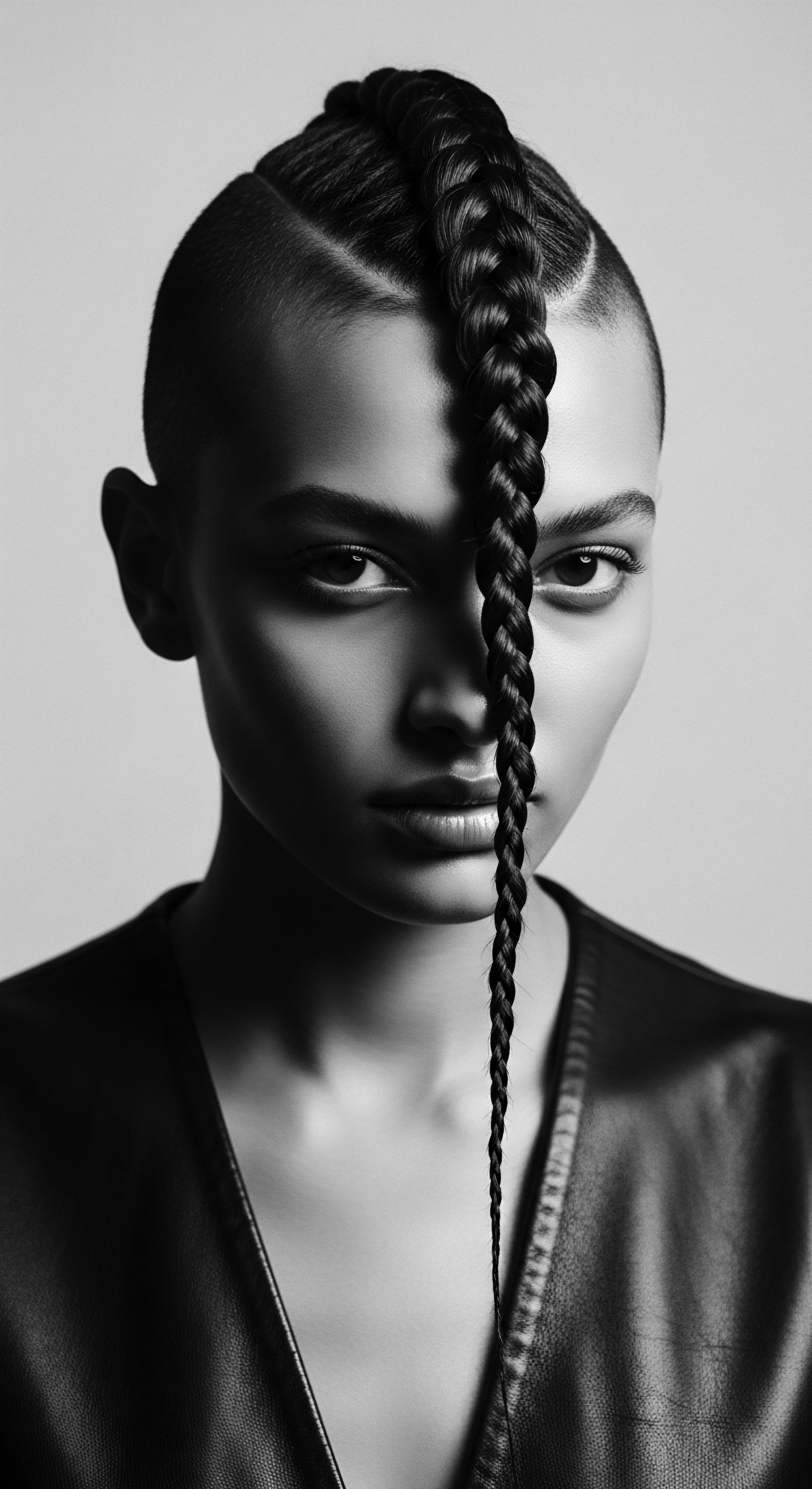
Holistic Influences On Hair Health
The wisdom of ancestral wellness philosophies extends beyond topical applications. These traditions understood that hair health is inextricably linked to overall physical, emotional, and spiritual well-being. A significant historical example of the deep connection between hair and societal power is the “pencil test” used during apartheid in South Africa. This discriminatory practice involved inserting a pencil into a person’s hair to determine if it would hold or fall out, serving as a crude marker of proximity to whiteness and, consequently, access to social and economic privileges.
This stark reality led many Black individuals to adopt hair straightening methods to conform to Eurocentric beauty ideals for survival and upward mobility. However, the natural hair movement that emerged in later decades, fueled by a powerful desire for self-acceptance and a rejection of these oppressive standards, represents a return to ancestral pride. This movement celebrates the inherent beauty of kinky and coily textures and often incorporates traditional African ingredients and practices, thereby linking holistic wellness, identity, and the very act of hair care as a form of cultural affirmation.
Nourishing the body from within, through a diet rich in fruits, vegetables, and natural fats, was an unstated but fundamental aspect of hair care in many African societies. Traditional diets provided the necessary vitamins, minerals, and proteins that support healthy hair growth. Additionally, the communal nature of many hair rituals fostered a sense of community and belonging, contributing to mental and emotional well-being—a less tangible but equally important aspect of holistic health.
The reverence for hair, often viewed as a spiritual conduit to ancestors or a symbol of life force, instilled a respectful and mindful approach to its care. This reverence meant practices were gentle, deliberate, and performed with a sense of purpose beyond mere aesthetics. Such an ethos is a powerful lesson for modern hair care, encouraging a mindful connection to our strands and the deeper heritage they represent.

Reflection
The journey through traditional African ingredients for textured hair growth brings us to a profound realization ❉ the past is not merely prologue; it is a living, breathing archive within each strand. The wisdom of our ancestors, preserved in botanical lore and time-honored rituals, continues to illuminate the path for resilient hair and vibrant identity. This exploration has been a communion with the ‘Soul of a Strand’ ethos, recognizing that every coil and kink holds generations of stories, triumphs, and the undeniable imprint of a heritage deeply connected to the earth.
The enduring power of shea butter, the protective strength of chebe, the fortifying essence of fenugreek, and countless other plant allies are more than remedies; they are cultural anchors. They speak of resilience forged in challenging environments, of ingenuity born from necessity, and of a beauty philosophy that honors authenticity. As we move forward, integrating these ancient truths with contemporary understanding, we are not just caring for hair; we are actively participating in a cultural relay, carrying forward the torch of ancestral wisdom.
Our textured hair, nurtured with the fruits of its heritage, stands as an eloquent statement of identity, a vibrant continuation of a legacy that knows no bounds. It reminds us that true well-being, for our hair and ourselves, is always found in the deep, resonant echoes from the source.

References
- Mouchane, M. et al. “Ethnobotanical Survey of Medicinal Plants used in the Treatment and Care of Hair in Karia Ba Mohamed (Northern Morocco).” Acta Botanica Gallica, 2024.
- Ayanae. “Powerful African and Asian Herbs for Hair Growth ❉ Nature’s Remedies.” AYANAE, 2024.
- Bebrų Kosmetika. “The Power of Hair in African Folklore ❉ Rituals and Traditions.” Bebrų Kosmetika, 2024.
- Clinikally. “The Benefits of Fenugreek Seeds for Hair Health.” Clinikally, 2025.
- Conner, Paige. “Hair Care Secrets of the Past ❉ What Our Ancestors Used for Healthy Hair.” WebMD, 2024.
- Hale Cosmeceuticals. “Fair Trade Shea Butter ❉ Embracing Sustainable Beauty.” Hale Cosmeceuticals, 2024.
- Katherine Haircare. “I Tried a 4,000-Year-Old Egyptian Hair Mask—Here’s What Happened.” YouTube, 2025.
- MDPI. “Cosmetopoeia of African Plants in Hair Treatment and Care ❉ Topical Nutrition and the Antidiabetic Connection?” MDPI, 2024.
- Mega Lifesciences. “Is Fenugreek Good for Promoting Hair Growth?” WebMD, 2025.
- Paulski Art. “The Remarkable History Behind Shea Butter and Its Origins.” Paulski Art, 2024.
- Pyramide Cosmetics. “Beauty Rituals of Ancient Egypt.” Pyramide Cosmetics, 2022.
- ResearchGate. “Traditional African Medicine.” ResearchGate, 2021.
- Salford Students’ Union. “The Remarkable History Behind Black Hairstyles.” Salford Students’ Union, 2024.
- Sellox Blog. “Ancient African Hair Growth Secrets For Healthy Hair.” Sellox Blog, 2021.
- Sevich. “Unlocking the Secrets of Chebe Powder from Chad ❉ Benefits and Uses.” Assendelft, 2025.
- USC Dornsife. “Kinky, Curly Hair ❉ A Tool of Resistance Across the African Diaspora.” USC Dornsife, 2016.
